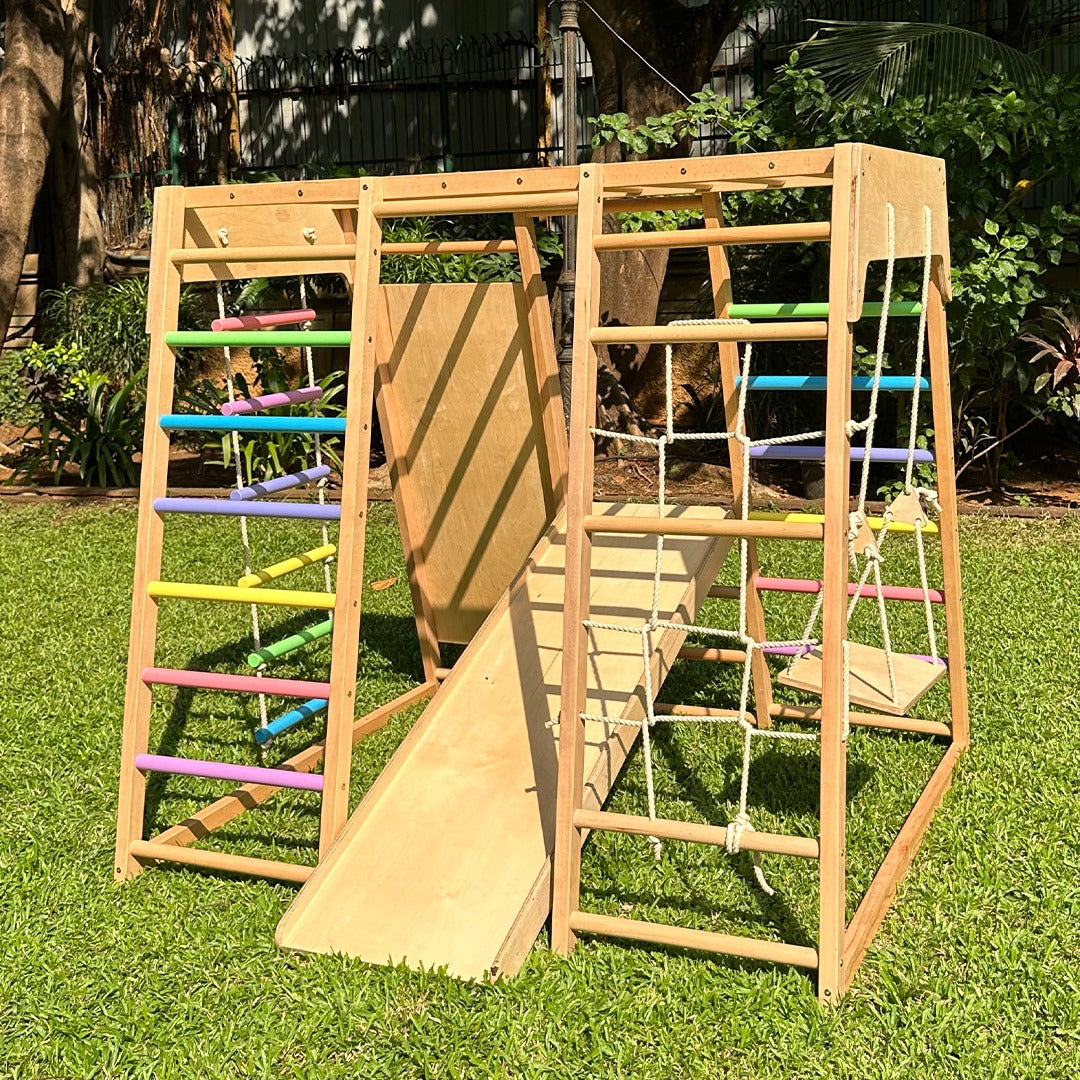Picture this: your little one is throwing a full-blown tantrum because their favourite toy car broke, or maybe they're quietly sulking in a corner after a minor disagreement with a cousin. Our first instinct, often rooted in generations of upbringing, might be to quickly calm them down, distract them, or gently suggest, "chup ho jao, bete, it's okay." While the intention is pure – to soothe and protect – are we truly equipping our children to understand the storm brewing inside them?
In the vibrant tapestry of Indian family life, where harmony, respect for elders, and a sense of collective well-being often take precedence, discussing individual feelings, especially "negative" ones like anger, frustration, or sadness, can sometimes feel like a taboo. We're taught to be strong, to "adjust," and to not make a fuss. But here's the modern parenting truth: every emotion, big or small, is a valid part of the human experience. Learning to acknowledge, name, and navigate these feelings is a cornerstone of emotional intelligence, a skill far more valuable than any report card grade.
Beyond 'Chup Ho Jao': Why Emotional Literacy Matters
Think about it: as adults, how many of us struggle to articulate what we truly feel in challenging situations, whether at work or within our families? This often stems from not having been taught the language of emotion as children. When we encourage our children to suppress their feelings, we inadvertently teach them that certain emotions are "bad" or unacceptable. This can lead to internalised struggles, anxiety, and even difficulties in forming healthy relationships later in life.
Our children are growing up in a world that is far more complex and emotionally demanding than ours was. They face academic pressures, social media influences, and an increasingly fast-paced environment. Equipping them with the tools to understand their inner world – to say "I feel sad because my friend didn't share" instead of just hitting them, or "I'm frustrated that my tower keeps falling" rather than just giving up – empowers them. It gives them agency over their reactions and helps them develop coping mechanisms that truly serve them.
Creating a Safe Haven for Feelings at Home
The first step in fostering emotional literacy is to make our homes a sanctuary where all feelings are welcome. This doesn't mean allowing children to be disrespectful or aggressive; rather, it means validating the *feeling* even if the *behaviour* needs guidance. When your child is upset, instead of dismissing it, try mirroring their emotion gently. "You seem really angry right now because your toy broke. I understand that feels very frustrating." This simple acknowledgement can be incredibly powerful.
We can use our daily routines – a family meal, a car ride, or bedtime stories – to open up conversations about feelings. "How did you feel when you played with your friends today?" or "Tell me one thing that made you happy and one thing that made you a little sad today." Even sharing your own age-appropriate feelings – "Mama felt a little tired today, so I'm taking a short break" – models healthy emotional expression.
Giving Them Words for Their World
Just as we teach them colours and numbers, we need to teach our children an emotional vocabulary. Beyond "happy" and "sad," introduce words like frustrated, excited, worried, surprised, disappointed, grateful, curious. Use storybooks that depict characters experiencing various emotions, and talk about how the characters might be feeling. Even in our beautiful regional languages, we can expand their emotional lexicon – "krodh" (anger), "dukh" (sadness), "anand" (joy), "chinta" (worry).
Pay attention to their non-verbal cues. Sometimes, a child might not have the words but their slumped shoulders or clenched fists speak volumes. "Your face looks a little scrunched up, are you feeling a bit annoyed?" Helping them connect the physical sensations to the emotion is a vital step. This is where play can be an incredible tool. Through imaginative play, children often process real-life situations and emotions. A doll might be "angry" or a teddy bear "scared," giving them a safe space to explore these feelings externally.
Navigating the Big Waves: Anger and Frustration
Anger and frustration are perhaps the most challenging emotions for both children and parents. In Indian homes, these are often quickly suppressed. Instead, let's teach our children constructive ways to handle these powerful feelings. It's okay to feel angry; it's not okay to hit or throw things. Help them identify what anger feels like in their body – a hot head, a tight chest. Then, introduce "calming tools":
- Deep breaths: "Breathe in like you're smelling a flower, breathe out like you're blowing out a candle."
- Counting: Slowly counting to ten.
- A "calm down" corner: A designated safe space with soft cushions or books where they can go to regroup.
- Physical release: Squeezing a stress ball, jumping, running around (if safe).
These aren't punishments; they are strategies for self-regulation, teaching them that they have control over how they respond to intense feelings.
The Role of Our "Nani" and "Dadi" in Emotional Nurturing
Grandparents hold a special place in Indian families, often being sources of unconditional love and wisdom. While their natural inclination might be to spoil or distract, we can gently involve them in this modern parenting approach. Explain to them the importance of validating feelings. They can play a beautiful role by sharing stories from their own childhood about challenges and how they overcame them, subtly teaching resilience and empathy. Their calm presence and comforting words can be incredibly reassuring when a child is overwhelmed.
Ultimately, nurturing emotional intelligence is not about raising "perfect" children who never get upset. It's about raising children who understand themselves, can articulate their needs, empathise with others, and navigate life's inevitable ups and downs with resilience and a strong inner compass. It's about empowering them to be truly happy, whole individuals who can form deep, meaningful connections throughout their lives, enriching not just their own journey but the vibrant tapestry of our families and communities.
As we guide our children to understand their beautiful, complex emotional world, engaging them with activities that foster self-expression and understanding becomes crucial. SkilloToys offers a thoughtfully curated collection of safe, educational, and play-based learning toys that naturally encourage emotional exploration and communication, helping your child build confidence as they navigate their feelings. Visit SkilloToys.com today to discover resources that make emotional learning a joyful adventure for your little one.



